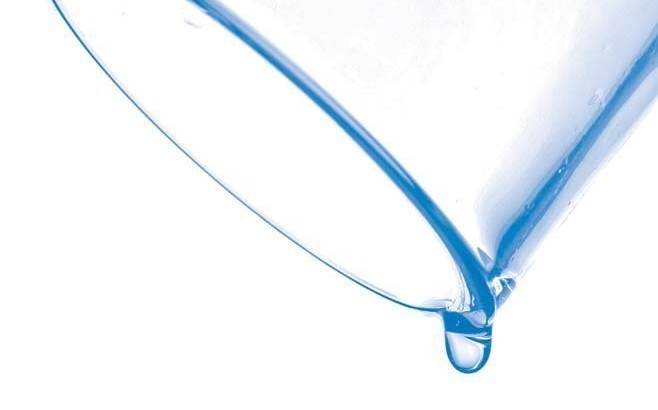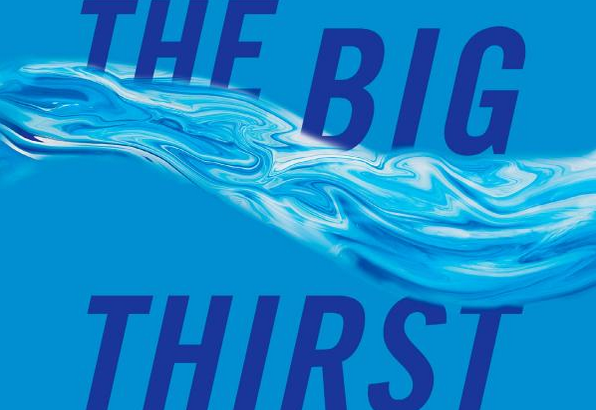Month: August 2015

Lit Review: Water 4.0: The Past, Present, and Future of the World’s Most Vital Resource
Water 4.0: The Past, Present, and Future of the World’s Most Vital Resource.
“If water is the essential ingredient of life, then water supply is the essential ingredient of civilization.” The book covers water systems that have supported civilization from the Romans to the modern world. No large metropolis (over 100,000) has been able to function without water technology. In fact, most of our systems are based upon what the Romans invented and curated throughout their rule. Water distribution played a key role in keeping the world small during “the Dark Ages” and the Medieval era. Refuse and sewage plagued large metropolitan areas up until the start of the 20th century with the start of basic water treatment (filtration and chlorination). Waster water treatment is a relatively new idea, gaining traction with the Environmental movement in the 1960s and 1970s and key legislation: Clean Water Act (1972) and Safe Drinking Water Act (1974). The Clean Water Act focused on sewage treatment and disposal, while the Safe Drinking Water Act focused on chemical compounds found in water. Of course, technology has gone hand in hand in both enabling measuring water particles in parts per billion and parts per trillion, while creating more complex man-made chemical compounds (prescription drugs, cleaning solutions, etc.), which begs the question, how bad are particles in our water, and to what extent is our water measurement capability a signifier of water pollution?
Sedlak goes through pros and cons of new technologies available for the creation of water (de-salination), treatment of wastewater (membrane bioreactors), reuse of water (runoff and gray water specifically), and water conservation. His terms are “acquisition, treatment, and management of water”. His future has two outcomes, a centralized system that employs all modern technologies to acquire, treat, and manage its water system, or a distributed system that has individual and neighborhood systems that are off a centralized water grid. His book is important in understanding that while water is a support system to life on earth, our treatment of and attitudes toward water is a relatively new concept.
Water 1.0 – Distribution – pipes, aqueducts (cloacae – sewers)
Water 2.0 – Filtration – water treatment (filters and chlorination) 1890s – 1940s
Water 3.0 – Waste Water Purification – sewage treatment due to pollution
Water 4.0 – De-centralization – systems that combine centralized and distributed water.
centralized systems break and are less efficient, but are more cost effective.
Reverse-Osmosis De-salination (water purification)
Reverse-Osmosis and Forward-Osmosis membrane bioreactors (wastewater treatment)

Lit Review: The Big Thirst: The Secret Life and Turbulent Future of Water
The Big Thirst: The Secret Life and Turbulent Future of Water.
The Big Thirst outlines our global attitudes towards water and how our current perceptions and relationships with water must change in order to grapple with the impending challenges of water scarcity. From the US to Australia to India, Fishman details how each country has dealt with water crises, the varying solutions and the different challenges each nation faces. Our current solution for water crisis is water importation, which is implausible and absurdly costly. One only needs to hear the story of Barcelona Spain’s water shortage in 2008 or even the small town of Orme, TN’s (142 people), where the town ran out of water for 4-months and was on a 3-hour a day water ration, to understand that water is a precious resource. Water management has improved over the years, but our systems are rarely updated and are currently being stressed (population, age decay, extreme weather patterns) to the point where these systems are failing. People only pay for the delivery of water, not for the maintenance and upkeep of systems, and thus are attitude about water is, “it’s water. Of course it’s free.” Free water is no longer a luxury we have, at least, free clean water.” Fishman calls for a change to our water habits and water attitudes, because our attitudes toward water is the strongest obstacle to changing and sustaining our water future, which is to say, sustaining our future.

NPR: Despite The Drought, California Farms See Record Sales In 2014
Despite the strain of prolonged drought, in 2014, California farms sold $54 billion worth of crops like almonds or grapes, and animal products like milk.

Berndnaut Smilde: Indoor Nimbus Clouds
Taking inspiration from Netherlands-based artist Berndnaut Smilde who creates nimbus clouds indoors, “relying on a delicate balance of smoke, moisture and light.”

CA Water Policy Chronology
In order to better understand California’s water history, mapping out the policies which helped create today’s water system seemed like a good place to start. Below is a short-list of state and federal laws and decisions that have impacted the state.
1850 – Act of 1850, or “Pueblo Policy” influencing development of water rights (Los Angeles)
1850 – Public trust doctrine – hold its waters in trust for public uses.
1902 – [Federal] Reclamation Act – (1903 LA river runs out of water)
1913/14 – California first began regulating water diversions. – of “public interest” or “beneficial purposes”. State Board is guided by “public interest” for permits
1920 – [Federal] Federal Power Act of 1920 (FPA), amended 1935, now Federal Energy Regulatory Commission (FERC): Hydropower. Before 1920, 41 dams existed in CA; today there are over 1400.
1928 – CA amendment that supports riparian (English Common law) and appropriative rights (Miner’s diverting for ‘beneficial use’ — “first in time, first in right” principles). This is the backbone of most Western states and farming.
1933 – [Federal] Central Valley Project – Federal water management in state of California. Provides irrigational and municipal water to water-poor San-Joaquin Valley (many dams built including Shasta dam)
1935 – [Supreme Court] California/Oregon Power Company v. Beaver/Portland Cement Company. State law is the source of water rights. (Hoover dam is completed)
1943 – California adopts a water code. Municipal and drinking has highest priority, followed by agricultural by irrigation. Watershed areas have priority (where water originates)
1956 – [Federal] Water Pollution Control Act (1956) – originally 1948 but reupped – matching grants for sewage treatment plant construction! From the book, Water 4.0 – “By 1972, fully 98% of the country’s urban population was served by sewage treatment plants.”
1960 – California State Water Project (SWP). The state water management project makes deliveries to two-thirds of California’s population. It is maintained and operated by the California Department of Water Resources. 70% for urban users and 30% to agriculture. http://www.water.ca.gov/swp/ http://www.water.ca.gov/swp/docs/Timeline.pdf
1970 – [Federal] California Endangered Species Act (CESA)
1970 – [Federal] California Environmental Quality Act (CEQA) – requires development projects to demonstrate a reasonable likelihood of obtaining necessary water supplies as a condition for their approval. EIR (environmental impact report) must describe and analyze the project’s ability to acquire water supplies and the project’s effect on the supplies, because the EIR’s analysis of the project’s environmental effects would otherwise be incomplete. Must show short-term and long-term supplies
1972 – [Federal] Clean Water Act (CWA). Authority over discharge of pollutants. Federal projects must comply with state water quality standards.
1973 – [Federal] Endangered Species Act.
1974 – [Federal] Safe Drinking Water Act. Requires utilities to test for 91 contaminants in water. (amendments 1986, 1996)
1977 – State Water Resources Control Board cuts/curtails water supply. (drought in 1977)
1978 – [Supreme Court] California vs. United States – “federal government must comply with state laws both in acquiring water rights-whether by appropriation, purchase or condemnation.”
1983 – Urban Water Management Planning Act (CA), requires water supply agencies to prepare an Urban Water Management Plan describing the availability of the agency’s water supplies for future urban growth.
1992 – [Federal] Central Valley Project Improvement Act, alleviate some environmental problems associated with CVP. e.g. 800,000 acre-feet of water-to fish, wildlife and habitat purposes in the Delta.
1992 – [Federal] Energy Policy Act – water conservation, which includes mandates for plumbing fixture efficiency standards. 1.6 gallons per toilet flush, showerheads 2.5 gallons per minute.
2002 – California SB 211, for subdivision maps, must impose a condition requiring that a “sufficient water supply” is available for the project.
2007 – [Federal] Delta smelt (fish) protection (Sacramento San Joaquin Valley) – water delivery reduction by as much as 1/3 in these areas.
2015 – State Water Resources Control Board cuts water supply (24%) due to drought – Jerry Brown
A huge thank you to Jon Ashley at the University of Virginia Law Library.
References:
– California Water Board. http://www.water.ca.gov/swp/
– Medina, Jennifer. “California Cuts Farmers’ Share of Scant Water.” NYTimes. June 12, 2015. http://www.nytimes.com/2015/06/13/us/california-announces-restrictions-on-water-use-by-farmers.html last accessed September 8, 2015.
– Sedlak, David L. Water 4.0: The Past, Present, and Future of the World’s Most Vital Resource.
2014.
– Walston, Roderick E. “California Water Law: Historical Origins to the Present.” Whittier Law Review. vol. 29 (2007-2008). pp. 765-829.

